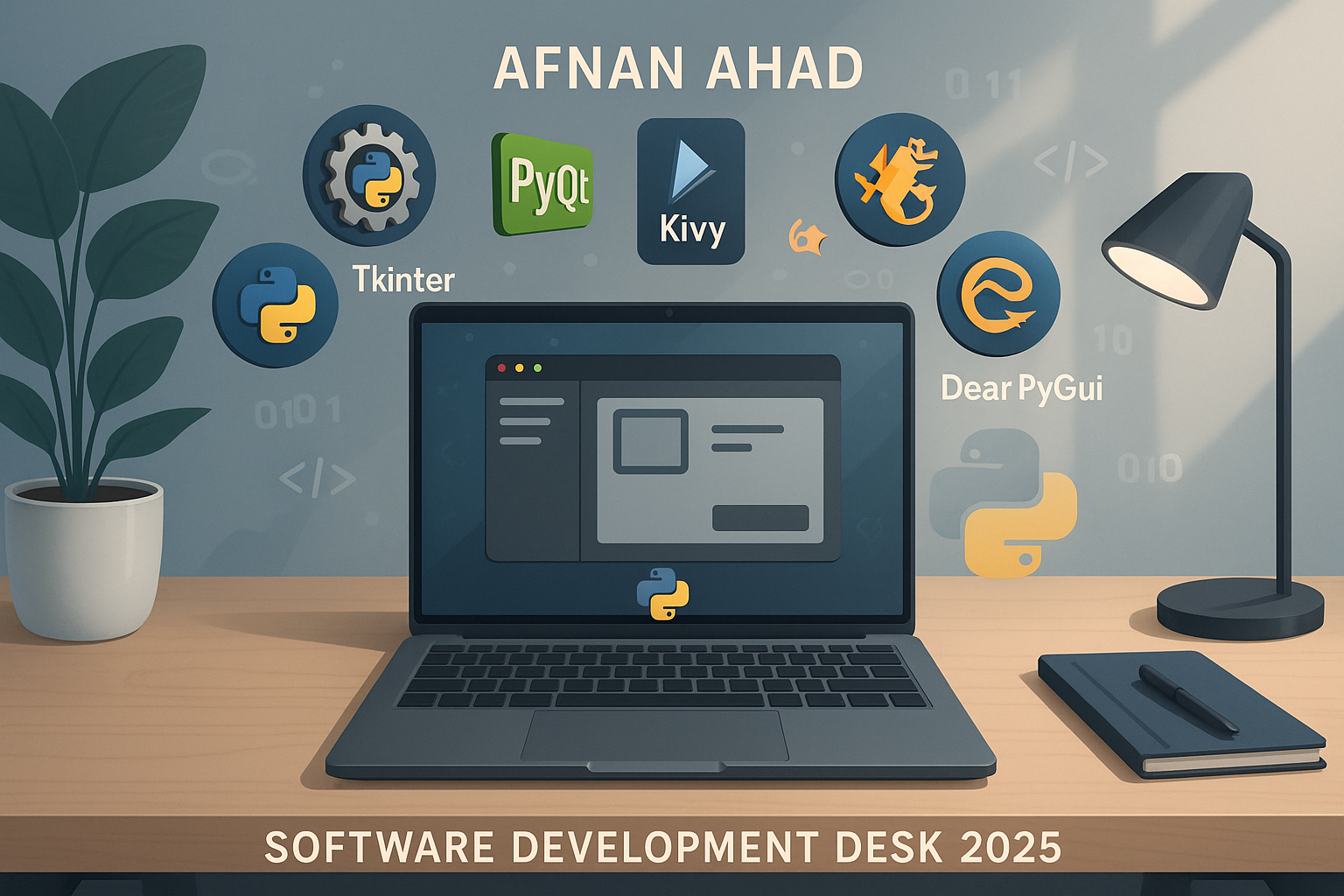How to Create Desktop Apps with Python: Best Tools & Examples (2025)


A full Stack web developer with over 5 years of experience
Introduction
Python isn’t just for data science or web development — it’s a powerful language for building full-featured desktop applications too.
Whether you're creating a note-taking app, a media player, or a business tool, Python offers a wide range of libraries and frameworks to make desktop apps fast, cross-platform, and beautiful.
In this guide, we’ll explore the top libraries, how to get started, and what tools are best for different app types.
1. Why Use Python for Desktop Apps?
- Cross-platform support (Windows, macOS, Linux)
- Easy to learn and code.
- Tons of GUI libraries.
- Fast prototyping for MVPs.
Ideal for:
- Tools and utilities
- Dashboards
- Educational software
- Internal business apps
2. Top Python GUI Frameworks & Tools (2025)
✅ 1. Tkinter (Built-in)
- Comes with Python — no extra installation.
- Great for small/simple apps.
- Lightweight and easy to learn.
Use case: Basic calculators, form apps, text editors.
🎨 2. PyQt / PySide6
- Full-featured framework based on Qt.
- Beautiful UI, complex widgets, and animations.
- PySide is LGPL licensed (great for open-source).
Use case: Rich applications like media editors, design tools.
🖼️ 3. Kivy
- Open-source and great for touch UI.
- Supports mobile and desktop both.
- Modern look, GPU-accelerated.
Use case: Creative apps, mobile-first tools.
⚡ 4. Electron + Python (via Eel / Pywebview)
- Combine Python back-end with HTML/CSS/JS front-end.
- Looks modern, just like a web app.
- Use
Eelorpywebviewfor integration.
Use case: Modern, responsive desktop tools.
🎯 5. Dear PyGui
- Simple API for modern GPU-accelerated GUIs.
- Fast rendering, especially for dashboards.
Use case: Data tools, dashboards, dev utilities.
6. Toga (BeeWare)
- Native widgets, cross-platform.
- Still maturing but promising.
3. Packaging Your Desktop App
Once your app is ready, package it as an executable:
- PyInstaller: Turn
.pyinto.exe,.app, or.bin. - cx_Freeze: Works well for Qt apps.
- Briefcase (BeeWare): Create installers and app bundles.
bashCopyEditpyinstaller --onefile my_app.py
4. Bonus: Add Features
- Database: SQLite or SQLAlchemy for local storage.
- Notifications: Use
plyer,win10toast, or system-specific APIs. - APIs: Use
requestsorhttpxfor web-connected features. - Multithreading: Use
threadingorasyncioto avoid freezing the UI.
Conclusion
Python in 2025 is fully capable of building modern desktop applications. Whether you're building something small or powerful, there’s a tool to help you do it quickly and beautifully.
Choose the right framework, stay updated with trends, and start building your own desktop experience today!
Was this article helpful?